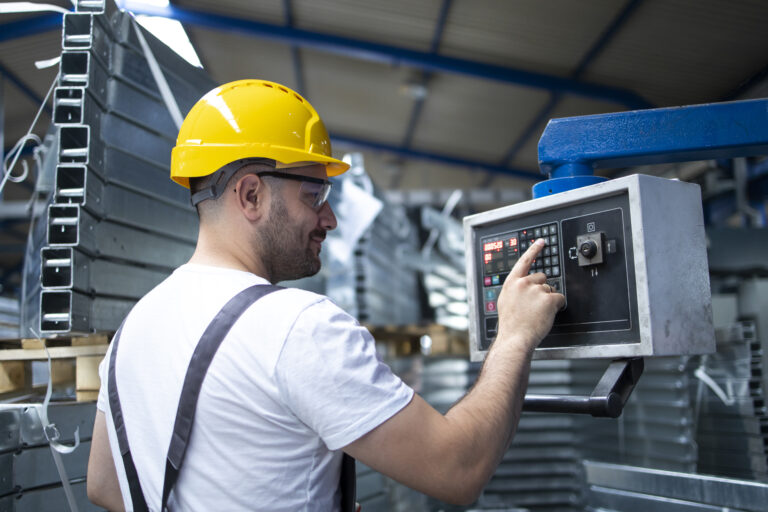
Afruimwagens are specialized wagons or trolleys designed to perform tasks that go beyond simple transport. The name comes from Dutch, where “afruimen” means “clearing away” and “wagens” means “wagons” or “carts.” These vehicles are built for strength, reliability, and efficiency, making them valuable in rugged and agricultural environments. From farms to construction sites and even hospitality spaces, afruimwagens have evolved into essential tools for a wide range of industries.
What Is an Afruimwagen?
At its core, an afruimwagen is a vehicle or cart built to clear, transport, or unload materials. It may be used for carrying harvested crops, removing agricultural waste, transporting construction debris, or collecting garbage. Depending on the application, afruimwagens can be manual, tractor-pulled, or motor-assisted. Some are designed with hydraulic tipping systems, while others are simple, durable handcarts. What makes them unique is their ability to handle heavy loads across uneven terrain while reducing manual labor and improving efficiency.
History and Evolution
Afruimwagens have been part of agricultural and rural life for centuries. Early models were simple wooden carts pulled by horses or oxen, used for clearing fields after harvests. As metalworking advanced, stronger steel frames, rubber tires, and improved axles gave afruimwagens greater strength and durability. In the modern era, technological innovation has transformed these vehicles. Many are now equipped with hydraulic tipping systems, modular compartments, and even sensors or electric drives for enhanced control and sustainability.
Types and Variants
Afruimwagens come in many forms depending on their intended use. Agricultural models are large, tractor-pulled wagons designed for carrying harvested crops, fertilizers, or equipment. Construction afruimwagens are heavy-duty versions built with reinforced frames for transporting debris, gravel, and building materials. Waste collection variants feature multiple compartments or bins to separate recyclable materials from general waste, and some are powered by electric motors for urban use. In hospitality and industrial settings, smaller indoor afruimwagens are used for clearing tables, moving supplies, or transporting equipment efficiently through large facilities.
Key Features and Technology
To perform efficiently, modern afruimwagens include several essential design elements. Strong, reinforced frames made from steel or aluminum provide durability under heavy loads. Hydraulic tipping systems allow quick unloading without manual lifting, improving both safety and speed. The wheels are designed according to the working environment — thick, rugged tires for outdoor and farm use, and quiet, smooth wheels for indoor settings. Advanced models may include load sensors to prevent overloading, GPS tracking for large-scale operations, and even electric or hybrid motors for eco-friendly transport. Modular designs also allow users to attach compartments, bins, or specialized accessories depending on the day’s tasks.
Applications and Use Cases
Afruimwagens are remarkably versatile and find applications in several fields. In agriculture, they are essential during harvest season for collecting and transporting crops from the field to storage or processing areas. Farmers also use them to carry fertilizers, tools, and feed across large fields. In the construction industry, afruimwagens play a crucial role in clearing rubble, moving sand, and transporting materials around job sites efficiently. Municipalities and waste management services use them to collect garbage and recyclables, especially in areas where large trucks cannot easily access. In the hospitality sector, smaller indoor versions are used in restaurants, hotels, and institutions to clear dishes, transport supplies, and keep operations organized and efficient.
Benefits of Using Afruimwagens
One of the primary benefits of afruimwagens is their ability to save time and reduce manual labor. Tasks that would take several workers and multiple trips can be completed faster and with less effort. This not only improves productivity but also reduces fatigue and injury risks for workers. Their robust design and load capacity make them indispensable in environments where reliability and endurance matter. Another key benefit is versatility—one afruimwagen can be adapted for various purposes simply by changing attachments or compartments. Over time, their durable construction also offers cost savings by minimizing the need for replacements and repairs. In addition, newer electric or hybrid versions contribute to sustainability by lowering emissions and energy costs.
Challenges and Limitations
Despite their usefulness, afruimwagens do come with certain challenges. Advanced models equipped with hydraulics, electric drives, or sensors can be expensive to purchase initially, which may be difficult for small-scale farmers or contractors. Regular maintenance is also essential, especially for hydraulic systems and moving parts that operate under heavy loads. Overloading an afruimwagen can lead to damage, accidents, or shortened lifespan. In rural or remote areas, sourcing spare parts or technical support may be difficult. There are also environmental limitations—extremely muddy, rocky, or steep terrains may still pose difficulties, even for well-built models. Lastly, ensuring compliance with local safety and transport regulations is important, particularly for motorized or road-legal versions.
Design and Safety Considerations
Manufacturers of afruimwagens focus heavily on safety and ergonomic design. Features such as low centers of gravity, stable wheelbases, and easy-to-operate tipping mechanisms minimize risks of tipping over or injury. Handles and control systems are designed to reduce physical strain during operation. For mechanized versions, safety locks and automatic braking systems prevent accidental movement. Materials are often treated to resist corrosion, especially in agricultural environments where exposure to moisture, fertilizers, or chemicals is common. Good design ensures that maintenance is simple, parts are easily replaceable, and performance remains consistent even after years of heavy use.
The Future of Afruimwagens
As industries continue to evolve, so will the afruimwagen. The next generation of these vehicles is likely to feature smart technologies such as IoT connectivity, load tracking, and predictive maintenance alerts. Electric and hybrid drives will become more common as energy efficiency and emissions regulations tighten worldwide. Lightweight but strong materials, such as composites and high-strength alloys, will reduce overall weight while maintaining durability. Modular designs will allow a single vehicle to serve multiple purposes—farmers could use the same afruimwagen for harvesting one season and for waste transport the next. Automation may also play a role, with self-propelled or remotely operated models reducing the need for manual driving. Sustainability will continue to shape design choices, emphasizing recyclable materials and energy-efficient operations.
Environmental Impact and Sustainability
Modern afruimwagens are increasingly designed with sustainability in mind. Electric-powered versions reduce carbon emissions and noise pollution, making them suitable for urban and agricultural use alike. Efficient design reduces fuel consumption for tractor-towed models, while durable materials ensure a long service life, minimizing waste. Additionally, many waste management applications of afruimwagens directly contribute to environmental protection by enabling better recycling and composting processes. As global awareness of environmental responsibility grows, demand for green, low-emission transport solutions like modern afruimwagens is expected to rise significantly.
Conclusion
Afruimwagens have come a long way from simple wooden carts to advanced, multi-functional machines. Their versatility, strength, and adaptability make them indispensable in a variety of industries, from agriculture and construction to municipal services and hospitality. By improving efficiency, reducing physical labor, and offering sustainable transport options, afruimwagens continue to prove their value in both traditional and modern work environments. As technology advances, these humble yet powerful vehicles will become even smarter, safer, and more efficient—ensuring they remain a cornerstone of productivity in the fields, cities, and workplaces of the future.







